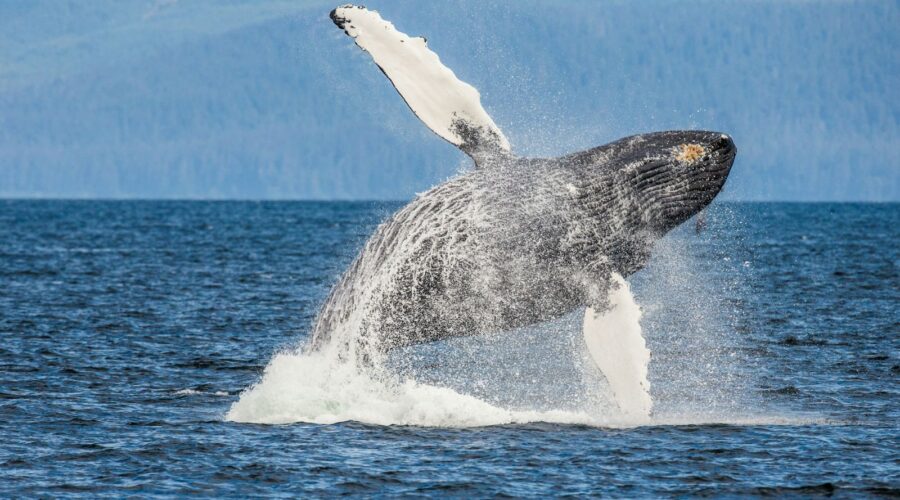17 Leading Destinations for Whale Watching Worldwide
Whales are one of the most graceful and majestic marine creatures and a delight to encounter. But it’s easier said than done; all whale species prefer to remain in the depths until it’s time to come up for air or feed. This is when tourists can benefit from whale watching tours.
Whale species you can see

Did you know there are 91 species of whales out there? They split into two main groups: Baleen Whales, with 15 species, and Toothed Whales, with 77 species. And yes, dolphins are technically whales, but when we think of whales, we think of the larger species.
Most Baleen Whales migrate, but not all of them. The ones that do, follow similar patterns and paths known as blue corridors or whale superhighways. They feed in the cold sea closer to the Poles, and breed closer to the Equator.
Here are the best places in the world for whale watching.
Iceland

According to one of the first whale watching tour companies in Iceland, from April to September, the best whale watching destinations are Skjalfandi Bay and Eyjafjordur. This is the place to see humpback, sperm, fin and blue whales.
From January to March, the Snæfellsnes peninsula is the to-go place which welcomes massive pods of killer whales, which emerge from the waves to feed on herrings.
Canada
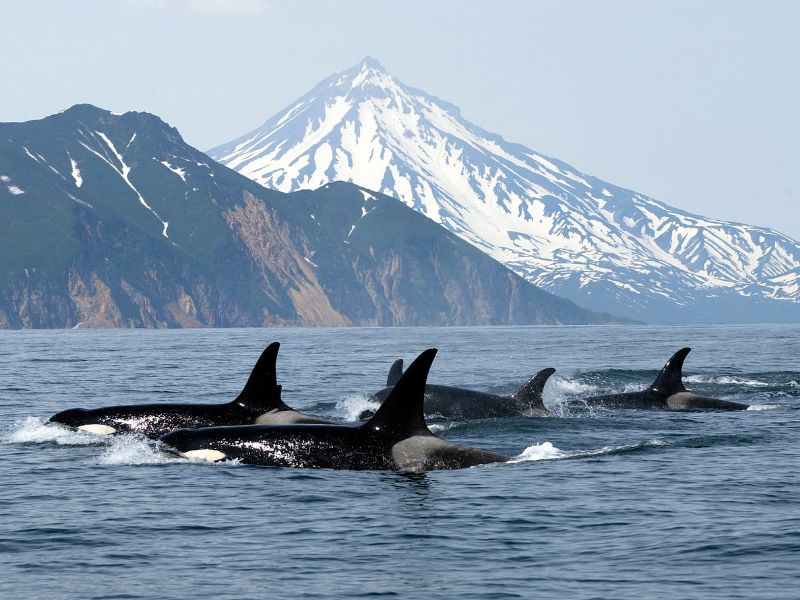
From April until October is the best time for whale watching in Canada since numerous whale pods emerge from the ocean’s depths to take a breather and feed on massive shoals throughout the Canadian coast.
The Pacific west coast witnesses closer to 300 killer whales swimming along the shores of British Columbia and around Vancouver Island.
Alaska

From April to September, the waters around the Kenai Peninsula and Southeast Alaska are bustling with humpback whales. Resurrection Bay near Kenai Fjords National Parks is the best place to be.
Over in the Bering Sea, you’ll see gray whales making their massive 11,000-mile migration from Baja California to the Arctic. But you don’t need to travel as far as the Bering Strait, visitors can catch a glimpse of the migration closer to the shores, around Aleutian Islands, Cook Inlet, or Kodiak Island.
New Zealand

The best place to watch sperm whales in New Zealand is in Kaikoura, a coastal town in South Island. Male sperm whales migrate here to feed and get themselves ready for breeding season. While females and young sperm whales remain in the tropics all year around.
Peak humpback whale watching season falls from June to August, when tourists can even sight ocras, blue, fin, minke, Southern right, pilot and 11 species of beaked whales.
Antarctica
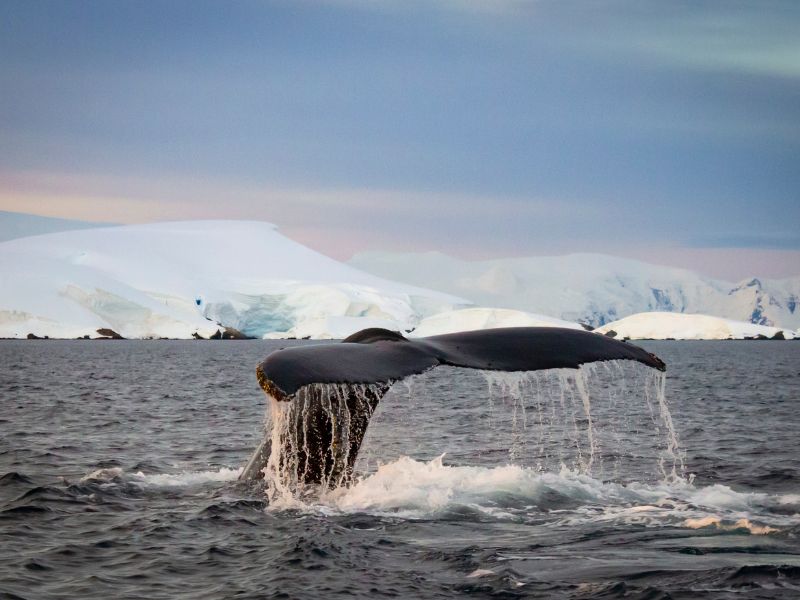
16 whale species out of 91 visits or lives in Antarctica’s waters during various months. Out of which there is only one dolphin, the hourglass dolphin.
Most whale watching tours in Antarctica happen during expeditions and cruises, typically during February and March. It is home of 7 large whale species including Killer whales (orcas), Humpback, Sperm, Southern right, Sei, Fin, Antarctic minke and Antarctic blue whales.
Arctic

The best thing about a trip to the Arctic is witnessing several types of whales besides animals like the polar bear, walrus, seal or Arctic fox.
Beluga, bowhead whales (also known as Greenland whale), and narwhals live in the Arctic waters all year around. While gray, minke, humpback, and blue whales occasionally inhabit parts of the Arctic migrate here temporarily during the summer months for feeding.
Norway
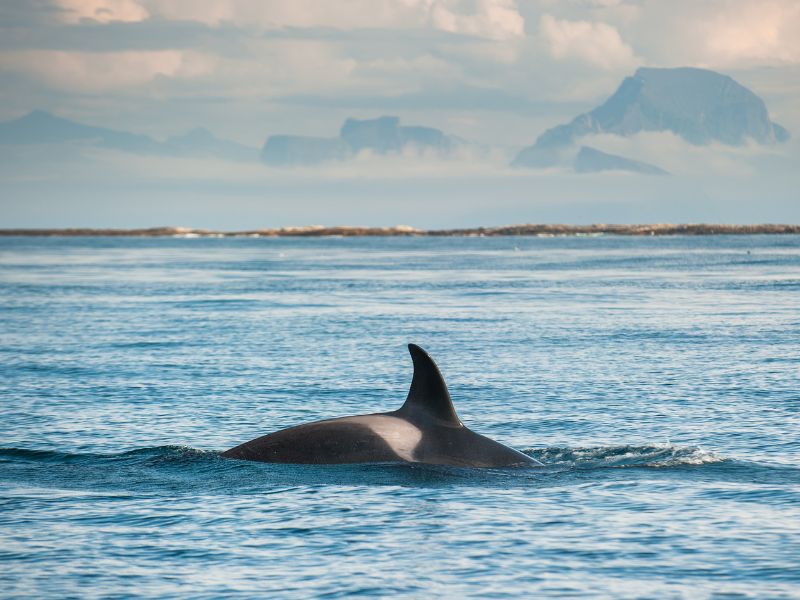
Close to the Senja Islands near Adenes, Norway welcomes some of the biggest orca and humpback crowds, which are seemingly attracted to shoals of herring.
Peak tourist season falls between November and January, increasing the chances of spotting humpback whales and orcas. Sperm whales are there all year especially around Vesterålen.
Caribbean

Dominican shores host some of the largest resident populations of sperm whales. Despite this, peak tourist season for whale watching falls between November and March.
During these months, pods of sperm whales breach and emerge to feed on massive shoals of fish. Scotts Head, Roseau, Layou, and Point Round are the closest towns from where whale watching tours start.
Mexico

The Baja Peninsula and the area around Los Cabos have become a thriving hub for pods of humpbacks, and blue whales, which are frequently spotted breaching during the fall.
Peak season typically varies; Los Cabos usually welcomes these giants during the later months of fall through well into winter, while other areas are responsible for sightings that last until April. Arriving between January and March is recommended to be the best time.
South Africa
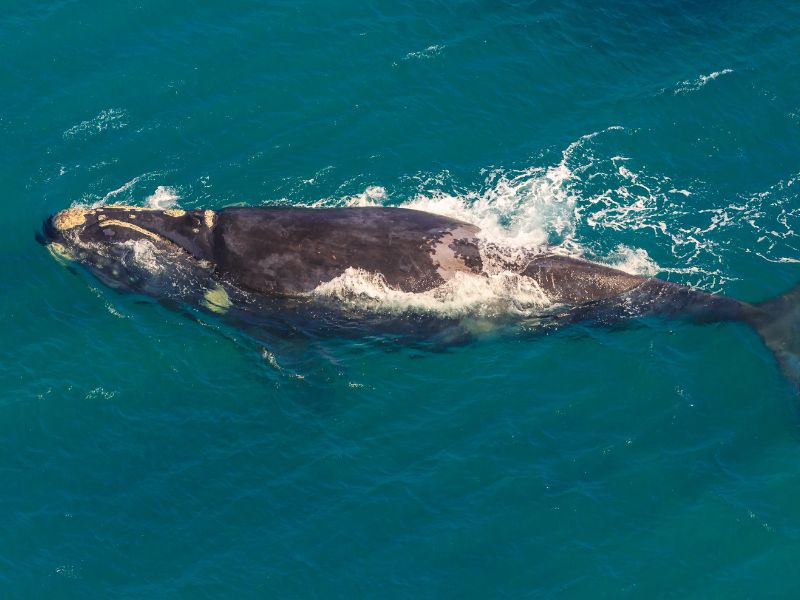
The waters around it is in the path of Humpback and Southern Right Whale migration. It starts in June and continue until September when they come closer to shore to give birth.
The best spot to capture this sight is in Hermanus, which also receives occasional passersby like Humpbacks and Bryde’s whales. If appropriately planned, tourists won’t even need to sit on a boat to witness these extraordinary animals. They may be visible from the shore.
Hawaii
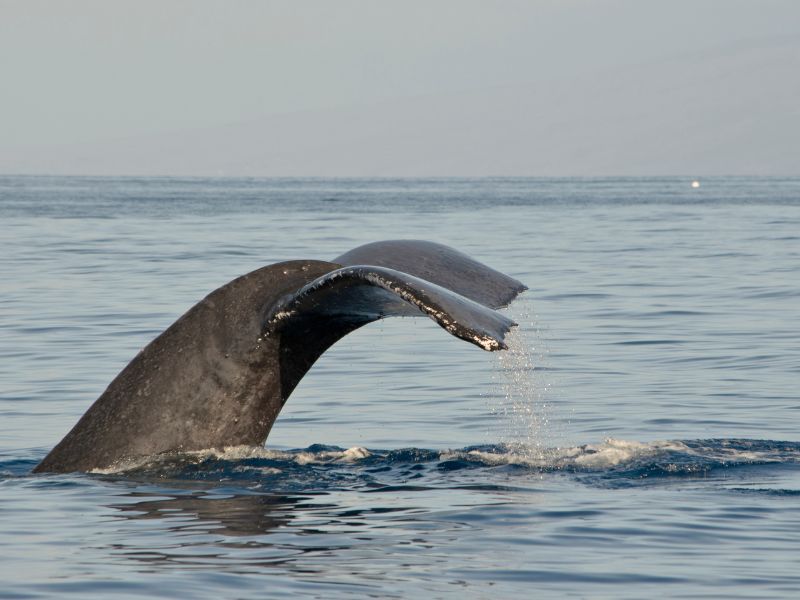
Hawaii also welcomes almost half of humpback whales North Pacific population. According to WWF Blue Corridor Report, 10,000 humpback whales grace Hawaii’s coast in December and into May, where they delight tourists with playful behavior and feeding frenzies.
The best spot to witness them is in Maui, where the warmer waves become a prime location for humpback migrations. Although whale watching usually lasts 4-5 months, your best bet would be to visit during March when the weather is pleasant enough to catch fleeting glimpses of these gentle giants.
Virginia Beach

Every year, several thousands of humpback whales start their migratory journey in New England, Canada, and make their way to the Caribbean. During this time, the whales are frequently spotted from Virginia Beach, especially during the months of December through March.
Apart from these humpbacks, tourists can also spot fin whales peeking shyly from the ocean.
Panama

Humpback whales hailing from the northern and southern hemispheres grace Panama, one of the only two places in the world welcoming them with open arms for breeding. These whales typically appear between July and October, but tourists can spot them earlier.
The Central American country invites tourists to whale watch from numerous locations including Pearl Island and Taboga Island. Sometimes, tourists will even glimpse humpbacks and dolphins frolicking together on incredibly rare and lucky occasions.
Australia

The Land Down Under has countless spots to whale watch all around the continent. Literally. But the most popular ones remain close to the Great Barrier Reef, Victoria, and Southern Australia.
Humpback whales frequent the Great Barrier Reef, peeking from the waves during their annual migration. The same areas witness the majestic orca pods, occasionally even engaging in playful learning behavior. You will find the Southern Right Whales and Blue Whales closer to Victoria and Southern Australia. All peak seasons vary, but tourists can visit between July and November.
Sri Lanka
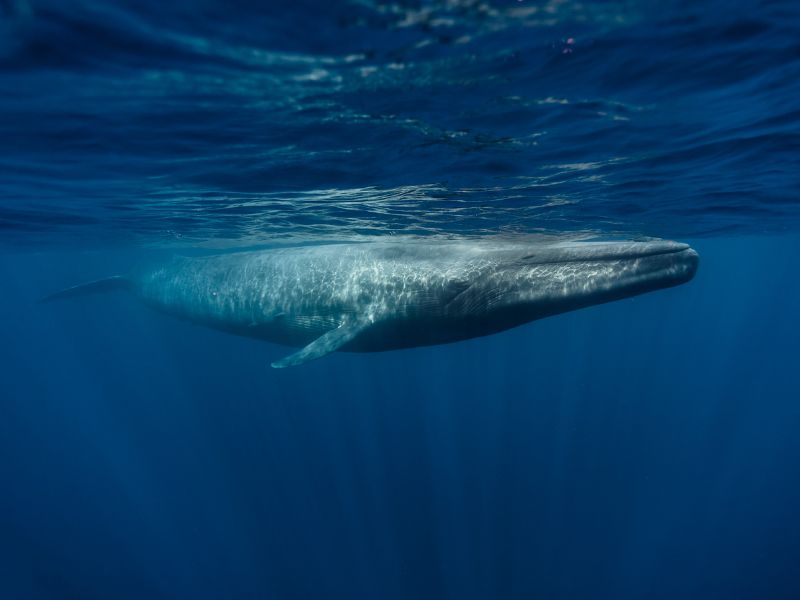
Kalpitiya is often graced by sperm whales, which love to hide behind the waves, so tourists might need to take guided whale-watching tours to witness them. The peak season lies outside the monsoon season, preferably from November through March, since rogue waves can disrupt the appearance.
On the other hand, Mirissa welcomes blue whales, sperm whales, and even humpbacks breaching the surface. The best time is from December to April.
Azores

The Azores has four resident species: Sperm Whale, Common Dolphin, Bottlenose Dolphin, and Risso’s Dolphin. Besides them, more than 20 species migrate along its shoreline.
Blue, Fin, and Sei whales arrive around March and can be spotted up until July. Pilot Whales come a bit later, but stay longer as well, until October. However, the best time to whale watching in the Azores is during spring, when visitors have a chance to catch a glimpse of most of the species.
Costa Rica

34 whales species out of 91 migrate across Costa Rica’s shores. On the Pacific side, the prime locations for observing humpback whales include the southern communities of Dominical, Uvita, and Drake Bay, extending to central areas like Manuel Antonio and Jaco, and even northern spots such as Tamarindo and Sámara.
Beaches Best Known For Turtle Watching Around the World
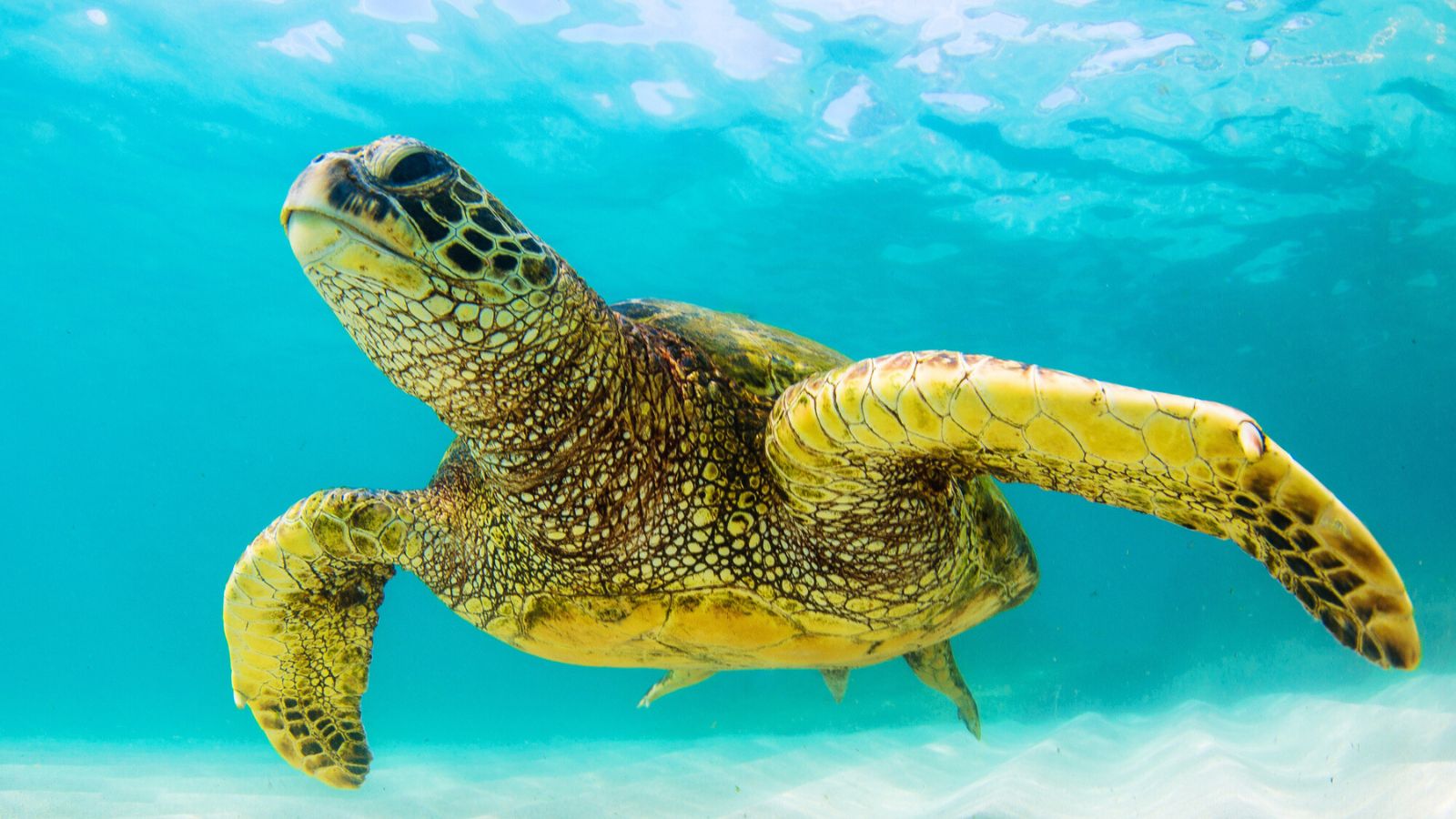
15 Best Beaches For Turtle Watching Around the World
Places to Get a Front-Row Seat to the World’s Largest Animal Migrations

The World’s Largest Animal Migrations
Emese Maczko is a travel blogger behind Eco Lodges Anywhere. Having explored several destinations around Europe, the US, Indonesia, and Australia, and resided in Germany, the United Kingdom, and Luxembourg, Emese possesses a keen understanding of diverse cultures and an appreciation for the beauty of each destination she visits. She advocates for sustainable travel and ecotourism.

